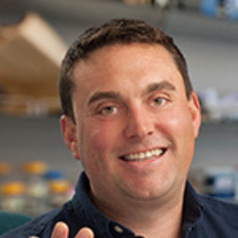What changes to viral genomes would allow them to infect new species? And, what are the natural processes – mutation, recombination, and natural selection – that permit their evolution? My lab group uses experimental evolution of viruses to find answers to these questions. We are able to culture viruses in the laboratory, watch them evolve in real time, and on occasion, witness them gain access to new host species. Our studies combine methods from many fields of biology. We typically begin research by modifying classic ecological niche theory to make predictions for viral host-range evolution. Next we test the theory by culturing viruses under controlled conditions. We sequence the evolved viral genomes to identify adaptive mutations, and then we determine the effects of the mutations by introducing them into naïve viral genomes using Multiplexed Automated Genome Engineering. Lastly, we characterize their newly evolved qualities by using single molecule biophysics assays. Altogether, the studies provide a complete picture for how gain-of-function mutations evolve in viruses.
Experience
-
–presentAssistant Professor of Biological Sciences, University of California San Diego
- San Diego, California, U.S.
- Article Feed
- Joined


